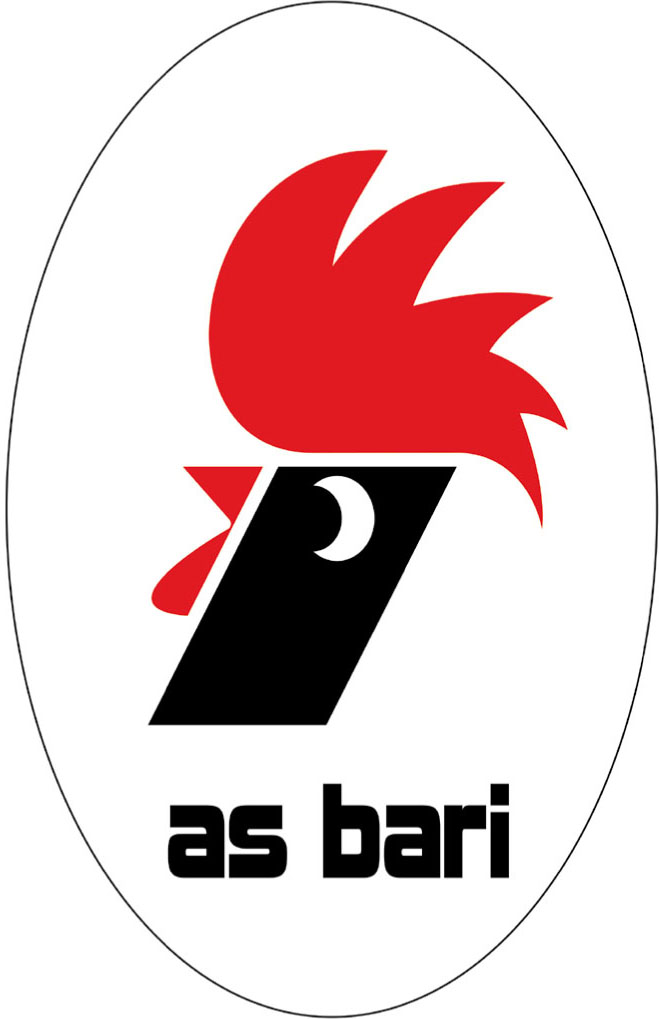
BARI
THE COCKERELS FROM PUGLIA
Because of bribery scandals and match-fixing, Italy is sometimes known as the country where football clubs can buy referees. In FC Bari’s case, the opposite is true. Here it was the referee who bought the football club. In May 2014 the ex-UEFA Cup referee Gianluca Paparesta took over AS Bari, a club that had gone bankrupt a couple of months earlier. This was an eye-catching purchase because Paparesta’s career as a referee had come to a sudden end after he had been mixed up in Calciopoli, the Italian bribery scandal of 2006.
Founded in 1908, Bari is a club with a great tradition and is recognised as one of Italian football’s most successful clubs. Its 33 years in the top division is impressive by Southern Italian standards. International stars like David Platt have played in Bari, and future national players such as Antonio Cassano, Leonardo Bonucci and Gianluca Zambrotta all broke through here.
In recent years, the club has struggled to return to the Italian top flight. Although being close to promotion back to the Serie A in 2018 the season ended in horror. The once proud Puglian side went bankrupt and restarted their quest for Serie A in Serie D, Italy’s fourth division.
CLUB: FC Bari 1908
NICKNAME: I Galletti (the Cockerels) and I Biancorossi (the Red and Whites)
FOUNDED: 1908
STADIUM: San Nicola, Bari (58,270 capacity)
HISTORIC PLAYERS: Luigi Bretti, Igor Protti, Klas Ingesson, Antonio Cassano and Jean-François Gillet

1979–2014. Since Bari Football Club and Ideale were forced by the fascist regime to merge in 1928, the cockerel has represented the club. It was first chosen as the mascot and was later included in the club crest. The club used several emblems up to 1979, when this one was created by the designer Piero Gratton, who was also responsible for one of Roma’s badges, the logo for Euro ’80 (held in Italy), and the UEFA emblem. The cockerel was easily identifiable and was immediately popular with Bari fans. It was originally chosen because it stands for vitality and the fighting spirit.

2014–2016. In the summer of 2014, Paparesta and his consortium introduced a new club logo, a design full of regional symbolism. The club’s colours are still red and white, originating from Bari’s town crest. The gold-coloured halo symbolises San Nicola (St Nicholas), who is Bari’s patron saint and has also given his name to the home stadium. All that remains of the cockerel is the red coxcomb above the new club name. The 11 black lines stand for the team’s 11 players, the leaning lines suggest players getting up and moving off. The uneven length represents speed, dynamism and action. This is a crest charged with symbolism, but it was coolly received by the fans, who missed their old cockerel.

2016–present. In June 2016, Bari changed owners when the former minority owner Cosmo Giancaspro took over the club. He immediately introduced a new emblem that restored the cockerel in a more precise design and spelled out the club’s full name. All against a red and white background, of course. Given the situation of the club it is unclear what the future holds for this crest.

Bari-born Antonio Cassano was raised in poverty in the city’s San Nicola district and made his Serie A debut for the club in 1999. Highly skilled and a precocious talent, ‘Fantantonio’ played for I Galletti for two seasons.